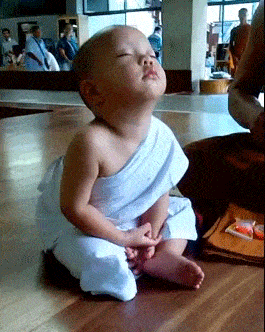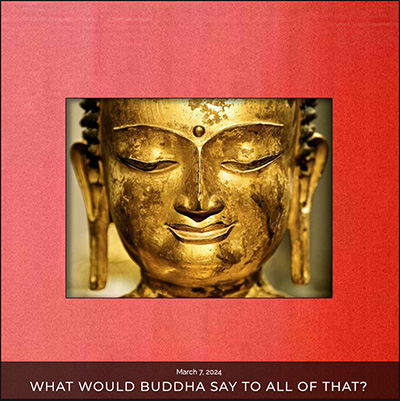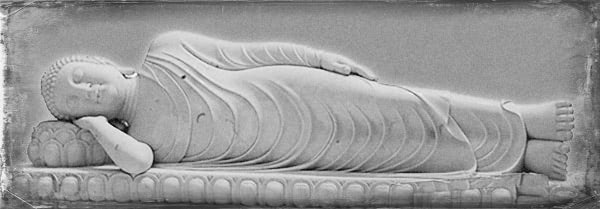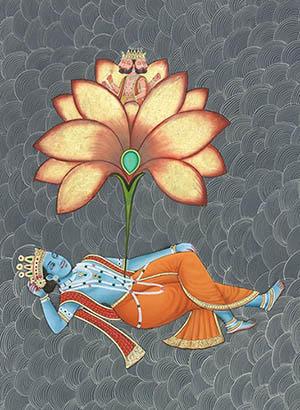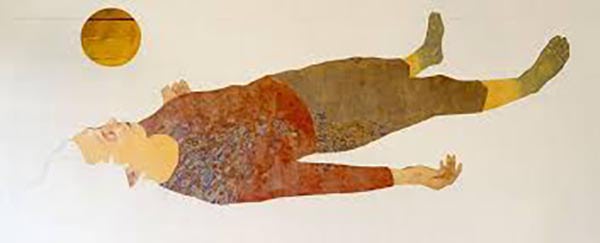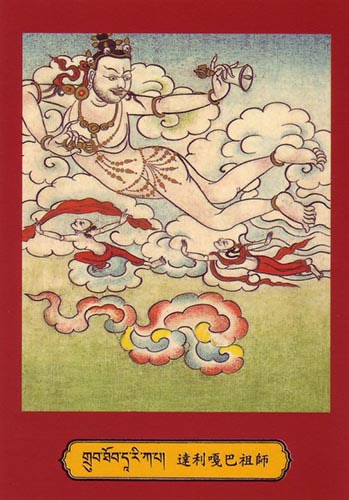[ Press PLAY and you can listen to a reading of this article ]
[ I recommend to use Google Chrome browser if you want to listen to the audio.
I still need to optimize the audio player for some of the other browsers. ]
Itinerary / a map & overview / shortcuts to specific chapters
- Introduction
- How did the Buddha sleep tonight?
- The Buddha about Sleep and Dream
- The Practice of the Lion’s Posture
- Rudolf Steiner’s advise on Sleep and Dream
- Steiner’s Practical Advice on Dreaming
- The Spiritual Dimension of Sleep and Dreams
- The Morning Transition Period
- Yoga Nidra, the ancient practice of Yogic Sleep
- The Praxis of Yoga Nidra. How to do it
- The Structure of a Yoga Nidra Session
- Dreaming yourself Awake. Lucid Dreaming and Tibetan Dream Yoga
- About the Theory and Practice of Lucid Dreaming
- The Tibetan Dream Yoga. Practical Application and Spiritual Aims
- The Dream Yoga in the Context of Tibetan Buddhism
- The question of The Self and of Reality
Itinerary / a overview
shortcuts to specific chaptersx
- Introduction
- How did the Buddha sleep tonight?
- The Buddha about Sleep and Dream
- The Practice of the Lion’s Posture
- Rudolf Steiner’s advise on Sleep and Dream
- Steiner’s Practical Advice on Dreaming
- The Spiritual Dimension of Sleep and Dreams
- The Morning Transition Period
- Yoga Nidra, the ancient practice of Yogic Sleep
- The Praxis of Yoga Nidra. How to do it
- The Structure of a Yoga Nidra Session
- Dreaming yourself Awake. Lucid Dreaming and Tibetan Dream Yoga
- About the Theory and Practice of Lucid Dreaming
- The Tibetan Dream Yoga. Practical Application and Spiritual Aims
- The Dream Yoga in the Context of Tibetan Buddhism
- The question of The Self and of Reality
listen ➡
[ In case you did not yet read ‘Sleeping, dreaming and dying – Part 1’, I recommend that before you dive into this article. Part 1 will provides you with a detailed and somewhat extraordinary insight into the ‘why, how and what for’ of the sleeping & dreaming business that we engage with every night. From the perspective of neuroscience, psychology as well as clairvoyant science. ]
Sleeping, Dreaming and the Self
Lucid Dreaming, Yoga Nidra & Tibetan Dream Yoga
And how did Buddha sleep tonight?
In this article I intend to focus more on practical aspects of sleeping and dreaming. From the perspective a few different spiritual teachings.
So now, without much further ado:
listen ➡
AND HOW DID THE BUDDHA SLEEP TONIGHT?
Well, unfortunately I was not there to ask him in person. My bad 🙄 .
I’d very much have liked to know this extraordinary guy.
But I guess he enjoyed a very healthy sleep, The Buddha.
Maybe you know or not that the historical Buddha, Siddhartha Gautama, lived in ancient India during the 5th to 4th centuries BCE. Born in Nepal, roughly 560 years before Jesus showed up on Earth to add more wisdom and spiritual know-how for us to practice.
Buddha’s teachings always resonated greatly with my own path, maybe I could easily be a little Buddhist myself. But organized religion is not my thing, actually.
A rather advanced practitioner of Tibetan Sleep Yoga 😉
Kidding!!! 😉
At the age of 35, Siddhartha attained enlightenment under the Bodhi Tree in Bodh Gaya, India.
From that moment on, he became known as the Buddha, meaning “the Enlightened One” or “the Awakened One.”
After his enlightenment, the Buddha gave his first teaching , where he taught the Four Noble Truths and the Eightfold Path, laying the foundation of his teachings.
Check out:
What would Buddha say
to all of that?
His teachings emphasized the impermanence of life, the causes of suffering, and the path to liberation through ethical conduct, mental discipline, and wisdom.
listen ➡
The Buddha about sleep & dream
About sleep and dream, “the Awakened One.” did not speak very much, just a little:
The Buddha emphasized the importance of moderation in all aspects of life, including sleep. He taught that excessive sleep, as well as sleep deprivation, can hinder spiritual practice. Adequate rest is essential for maintaining a clear and focused mind.
He recommended sleeping in the ‘Lion’s Posture’, lying on the right side with one hand under the cheek and the legs slightly bent. This position is said to be conducive to wakefulness and mindfulness. And dying as well.
Concerning dreams, the Buddha lists five causes of dreams: an imbalance of bodily humors, external influences, mental impressions, experiences from past lives, and divine messages. He explained that dreams can be influenced by past karma. The content of dreams may reflect unresolved issues, desires, fears, and karmic traces from past lives.
He did not encourage excessive focus on interpreting dreams, still acknowledged that some dreams could carry significant meanings, particularly those experienced by spiritually advanced individuals.
The Lion’s Posture
The Lion’s Posture, also known as Simhasana, holds a significant place in Buddhist practices, especially in the context of meditation and sleep. This posture is highly recommended for its benefits in promoting mindfulness, aiding in rest, and maintaining a meditative state.
Obviously no further reasons are given.
Just that Buddha said so 😎
But thankfully there are some more practical hints in Buddhist literature.
listen ➡
The Practice of the Lion’s Posture
In the practice of the Lion’s Posture, we begin by lying on the right side of the body. The right hand is then placed under the right cheek to support the head comfortably.
The legs are slightly bent, with the left leg resting gently on top of the right leg, ensuring the knees are not drawn too close to the chest but are instead comfortably bent.
Maintaining a straight spine is crucial, as it promotes optimal alignment and relaxation.
This posture is particularly recommended for mindful sleep, where we aim to maintain a degree of wakefulness and awareness even while resting. This is especially important in practices like Tibetan Dream Yoga and Sleep Yoga.
Additionally, when rest is needed during meditation sessions, adopting the Lion’s Posture allows us to rest without losing their meditative focus.
As the name indicates, the Lion’s Posture symbolizes fearlessness and confidence, qualities essential on the spiritual path. Just as a lion embodies strength and stability, this posture helps practitioners cultivate these attributes in their practice.
Practical Tips for Adopting the Lion’s Posture
To ensure comfort and support while practicing the Lion’s Posture, use a comfortable mattress and pillows to adequately support the head, neck, and body. Make sure the right hand is comfortably placed under the cheek to provide support without causing strain.
Before lying down, take a few moments to settle the mind and body. Practicing a few minutes of mindfulness meditation or deep breathing can help prepare for rest. Setting an intention to maintain awareness during rest or sleep can reinforce the practice of mindfulness.
Incorporating the Lion’s Posture into daily rest or sleep routines can help build familiarity and comfort with the posture. Use this posture during short rest periods in meditation sessions to rejuvenate the body and mind without losing focus.
~~~
~~
~
listen ➡
In the Part 1 Article I have given a lot of room to explain the view of Anthroposophy on sleep and dream. And especially Rudolf Steiner’s unique clairvoyant discoveries concerning what’s going on ‘behind what the eyes can see’, so to say.
Steiner gave a lot of practical advice an instructions for sleeping and dreaming and what it is good for in a spiritual sense.
Rudolf Steiner’s advise on Sleep and Dream
Steiner provided extensive teachings on sleep and dreams as part of his broader spiritual-scientific approach. This approach combines esoteric Christianity with practical life guidance, aiming to enhance spiritual development and overall well-being.
He emphasized the importance of maintaining regular sleep patterns. He advised aligning oneself with natural and cosmic rhythms by having consistent bedtimes and wake-up times, which help harmonize the physical and etheric bodies, fostering overall health.
Preparation for sleep is crucial. Steiner recommended engaging in calming activities that promote inner peace, such as reading spiritual texts or quiet reflection, to transition smoothly from the day’s activities to a restful state. He advised against stimulating activities like media consumption before bed to ensure peaceful entry into sleep.
Creating a conducive sleeping environment is also essential. This includes a comfortable bed, a dark and quiet room, and good ventilation. Steiner suggested that the sleeping space should be aesthetically pleasing and free of clutter to support a peaceful astral atmosphere.
Regarding diet and health, Steiner advised against consuming heavy or stimulating foods and drinks before bedtime. A light evening meal, ideally taken several hours before sleep, helps promote restful sleep. He also emphasized maintaining overall health through balanced nutrition, exercise, and attention to spiritual practices.
listen ➡
Steiner’s Practical Advice on Dreaming
Steiner encouraged conscious reflection on dreams upon waking. Keeping a dream journal to record and analyze dreams can provide insights into our inner life and spiritual development. Reflecting on dreams can reveal unconscious processes and help integrate them into conscious awareness.
He suggested specific spiritual exercises to enhance dream awareness and understanding, such as meditation, concentration exercises, and visualization techniques before sleep.
Practicing gratitude and setting positive intentions before sleep can influence the quality and content of dreams.
Understanding the content of dreams is another key aspect. Steiner taught that dreams can reflect the astral body’s activities during sleep. Interpreting the symbolic nature of dreams can provide insights into personal and spiritual issues. He distinguished between different types of dreams, including those influenced by daily experiences, subconscious processes, and spiritual inspirations.
Steiner also believed in the potential for developing lucidity in dreams, where the dreamer becomes aware that they are dreaming and can consciously interact with the dream environment. Lucid dreaming is seen as a tool for spiritual exploration and development, offering deeper insights into the nature of the self and the spiritual world.
listen ➡
The Spiritual Dimension of Sleep and Dreams
Steiner viewed sleep and dreams as times when our soul and spirit connect more directly with the spiritual world. During sleep, the astral body and the ego leave the physical and etheric bodies, allowing for spiritual rejuvenation and insights.
Dreams can sometimes carry messages from higher spiritual beings or reflect the soul’s experiences in the spiritual realm.
He also saw sleep and dreams as opportunities for education and healing. The experiences during sleep can provide spiritual guidance and healing, positively influencing waking life. Paying attention to dreams and their messages can support personal growth and spiritual evolution.
listen ➡
The Morning Transition Period
There is specific advice given for the period between sleeping and waking up in the morning. This transitional time is considered important in Anthroposophical teachings for setting the tone for the day and integrating insights gained during sleep.
I like that practice a lot.
I always try to extend this in-between-period as much as I can without falling asleep again.
Steiner emphasized the importance of waking up gradually and gently, allowing consciousness to smoothly transition from the sleep state to wakefulness. He believed that abrupt or rushed awakenings can disrupt the subtle processes of reintegrating the astral body and the ego with the physical and etheric bodies.
Upon waking, Steiner advised taking a few moments to reflect on any dreams you had during the night. This practice helps capture the essence of the dreams and understand their potential messages. Keeping a dream journal by your bedside to note down dreams as soon as you wake up can be very helpful, as recording dreams immediately helps preserve the details that might fade quickly after waking.
Steiner also recommended engaging in a brief period of meditation or quiet reflection upon waking. This practice can help center the mind and set a positive tone for the day. Morning meditation can include focusing on breathing, visualizing a serene image, or contemplating a spiritual text or idea.
Setting positive intentions or affirmations for the day ahead is another key practice in Steiner’s teachings. This helps in aligning your thoughts and actions with your spiritual goals and aspirations. Reflect on what you hope to achieve during the day, both in terms of practical tasks and personal or spiritual growth.
Practicing gratitude is an important part of the morning routine according to Steiner. Acknowledge and give thanks for the new day, the opportunities it brings, and the support of the spiritual world. This practice fosters a positive mindset and a sense of connection with the broader aspects of life.
Incorporating gentle physical activity, such as stretching or yoga, helps to awaken the body and align it with the mind and spirit. Engaging in mindful movement can enhance the sense of well-being and prepare the body for the day’s activities.
~~~
~~
~
listen ➡
Yoga Nidra, the ancient practice of Yogic Sleep
Yoga Nidra, is a form of guided meditation that induces deep relaxation and a state of consciousness between wakefulness and sleep.
The earliest mention of Yoga Nidra can be found in the Upanishads, which are amongst the oldest texts of Hinduism in India, which date back to around 700 BCE. The Upanishads explore the nature of the universe and the concept of Self-Realization.
One of the Upanishads discusses the four states of consciousness: waking, dream-filled sleep, deep sleep, and beyond deep sleep.
And this state beyond is called State of Pure Awareness. Also known as Turiya.
Turiya is the state of silent awareness within which all other states of consciousness arise. The practice of Yoga Nidra aims to help practitioners realize and rest in this state of Turiya, transcending the ordinary states of consciousness experienced during waking, dreaming, and deep sleep.
~~~
Modern Adaptations of Yoga Nidra have found scientific validation. Researchers have observed that practitioners can enter deep brainwave states similar to sleep, while remaining conscious, which was previously thought impossible.
These studies highlight Yoga Nidra’s ability to facilitate deep relaxation and significant changes in brain activity, enhancing empathy, compassion, and overall mental well-being .
Yoga Nidra has been recognized for its therapeutic benefits, particularly in treating PTSD and trauma. It helps individuals relate differently to their thoughts and emotions, facilitating the release of unresolved energy from traumatic experiences without requiring them to relive the events.
This gentle and supportive approach makes Yoga Nidra an effective tool for mental health and the healing of our psyche.
listen ➡
The Praxis of Yoga Nidra
How to do it
The ancient practice of Yoga Nidra is not only a tool for relaxation and sleep but also as a profound method for personal and spiritual growth.
Preparation for Yoga Nidra.
The preparation phase is crucial in setting the stage for a successful Yoga Nidra practice. It is importance to create a supportive environment. This involves choosing a quiet, comfortable space where one can lie down without disturbance.
Use of supportive pillows and blankets to ensure your physical comfort. This physical setup helps in minimizing distractions, allowing your mind to settle more easily into the practice.
Mental preparation is equally important. Take a few moments before beginning Yoga Nidra to quiet the mind. This can be achieved through simple mindfulness practices or deep breathing exercises. The goal is to transition from the activity of the day into a more relaxed state conducive to meditation.
Setting a clear intention or Sankalpa is a pivotal part of this preparation. The Sankalpa is a positive affirmation or resolve that you, the practitioner sets at the beginning of the session, which serves as a guiding principle throughout the practice. This intention helps to focus the mind and align the practice with personal or spiritual goals.
Such intentions could be:
“I cultivate loving and supportive relationships.”
“I communicate with clarity and compassion.”
“I am connected to the divine within and around me.”
“I trust in the guidance of my higher self.”
Or anything that is really relevant to your present life situation.
It should be stated in positive terms, be concise, and be phrased in the present tense as if it is already happening. The Sankalpa should reflect your deepest desires and align with your values and goals.
listen ➡
The Structure of a Yoga Nidra Session
A typical Yoga Nidra session follows a structured sequence that guides you from the waking state into deeper states of relaxation and awareness.
Initial Relaxation:
The session begins with an initial relaxation phase, where you are guided to focus on your breath and progressively relax the body. This stage is essential for releasing physical tension and preparing the body for deeper relaxation.
Sankalpa, setting a clear intention:
After achieving a state of initial relaxation, you are asked to mentally repeat your Sankalpa, your clear intention. The repetition of this intention at the beginning and end of the session helps to embed it deeply in the subconscious mind.
Body Scan:
The next stage involves a systematic body scan, where your attention is directed to different parts of the body. This technique, also known as rotation of consciousness, is designed to enhance body awareness and promote a deeper state of relaxation. The body scan helps in releasing residual tension and brings a sense of peace and calm.
Breath Awareness:
Following the body scan, you are asked to focus on your breath. Techniques such as observing the natural breath or practicing specific breathing exercises are employed. Breath awareness further calms the mind and helps in stabilizing attention.
Visualization:
Visualization exercises are then introduced, where you are guided to visualize specific images or scenes. These visualizations are often symbolic and can facilitate emotional release, healing, and insight. Visualization should be approached with an open mind, allowing images to arise naturally without forcing them.
This could be visualizations of:
Natural scenes like a Calm Beach: Imagining lying on a warm beach, listening to the rhythmic sound of waves crashing against the shore, and feeling the sun’s warmth on your skin.
Or abstract ones like Golden Light: Imagining a warm, golden light entering the body with each breath, filling every cell with healing energy and vitality.
Or symbolic images like a Lotus Flower: Visualizing a lotus flower blooming at the heart center, symbolizing purity, enlightenment, and spiritual awakening.
Again, remember to simply allow images to arise naturally without forcing them.
Sankalpa Repetition:
The Sankalpa, your intention is repeated once more towards the end of the session. This reinforces the intention and integrates it into the deeper layers of consciousness.
Reintegration:
The session concludes with a gradual reintegration phase, where you are gently guided back to the waking state. This involves becoming aware of your physical body, the environment, and slowly transitioning to an alert state of mind.
Integrating Yoga Nidra into Daily Life
Of importance is consistency in your practice. Regular practice of Yoga Nidra, even for short durations, can yield significant benefits over time. Incorporating Yoga Nidra into your daily routines, such as practicing in the morning to set a positive tone for the day or in the evening to unwind and prepare for restful sleep.
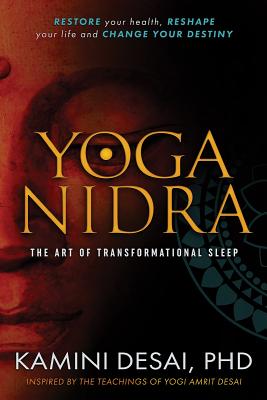
For a deeper study or actual application I recommend to download Kamini Desai’s book “Yoga Nidra: The Art of Transformational Sleep”. It gives real comprehensive information about the historical, practical and therapeutic aspects of Yoga Nidra.
Have fun sleeping like an old-school-Yogi ; )
~~~
~~
~
listen ➡
Dreaming yourself Awake
‘Row, row, row your boat
Gently down the stream
Merrily merrily, merrily, merrily
Life is but a dream’
English language nursery rhyme and a popular children’s song.
‘Row, row, row your boat
Gently down the stream.
If you see a crocodile,
Don’t forget to scream.’
Anonymous 😉
Lucid Dreaming and Tibetan Dream Yoga
The Buddha is called “The Awakened One”, and thats not a coincidence.
And by no coincident the concept of “Awaken!” is central to many spiritual traditions and this view is also echoed in modern integral and transpersonal psychology.
The statement of those views is that many of us live in a state of waking sleep, not fully aware of the realities around us and inside us.
Lucid Dreaming as well as Tibetan Dream Yoga are methods to help us wake up from the Dream of Life.
Although originating in totally different time periods and world regions, cultural backgrounds, both involve a heightened awareness of the present moment.
In Lucid Dreaming, one becomes aware that they are dreaming and can observe the dream’s unfolding with clarity.
Stephen LaBerge, a pioneer in the field, proved the scientific validity of lucid dreaming in the 1980s, showing that one can be consciously aware while dreaming. Besides other modern authors like Carlos Castaneda, he was responsible for introducing this methods to many people around the world.
Lucid Dreaming:
Lucid dreaming is defined as being aware that you are dreaming while you are in the dream state. This awareness can lead to an exhilarating sense of freedom and control over the dream environment.
This awareness can also be transformative, offering insights and the freedom to master one’s destiny. Lucid dreaming can enhance creativity, solve problems, and even aid in spiritual awakening.
The Tibetan Dream Yoga:
Tibetan Dream Yoga, is a ancient spiritual practice within Tibetan Buddhism that aims for complete spiritual awakening, or enlightenment. Enlightenment is described as a state of profound wisdom and compassion, transcending ordinary understanding.
It involves advanced techniques to awaken within dreams and sleep, using these states as tools for spiritual development. The ultimate goal is to realize the nature of reality and achieve profound wisdom and compassion.
Dream Yoga practices are designed to penetrate deeper levels of consciousness, leading to the ultimate realization of primordial consciousness, where mind and phenomena are non-dual.
Traditionally it was only taught in personal contact with a qualified teacher or Lama. In modern times it has become available for western audiences by books from knowledgeable Authors like Tenzin Wangyal Rinpoche and Alan Wallace.
listen ➡
About the Theory and Practice of Lucid Dreaming
Meditative Quiescence, also known as shamatha or meditative inactivity.
Meditative Quiescence is the foundational practice that stabilizes the mind, creating a serene and focused mental environment conducive to lucidity.
– Sit quietly, your body at ease, your breath flowing naturally. In this state, you are not forcing your mind to focus; rather, you are allowing it to settle naturally, much like a jar of muddy water left undisturbed until it clears.
This process involves gently observing your breath, noting the rise and fall of your abdomen or the coolness of the air entering your nostrils.
The goal is to develop a relaxed concentration, a stable attention that doesn’t waver despite the distractions of thoughts or emotions.
As you practice, you will notice how your mind tends to wander. This is perfectly normal. The key is not to suppress these thoughts but to gently bring your attention back to your breath each time you notice your mind has drifted. Over time, this practice builds a stable platform of attention, essential for recognizing and maintaining lucidity in dreams.
The ‘Theory’ of Lucid Dreaming
Lucid dreaming, at its core, is about being conscious within your dreams.
The theory behind it suggests that our minds are capable of achieving awareness during the dream state. This awareness allows us to recognize that we are dreaming, which can transform the dream into a vivid and controllable experience.
Imagine realizing you are in a dream, understanding that the world around you is a creation of your mind. This realization can be both exhilarating and liberating, opening up endless possibilities for exploration and creativity.
The Practice of Lucid Dreaming
– To cultivate lucid dreaming, one begins by enhancing dream recall.
Keeping a dream journal is a practical first step. Every morning, as soon as you wake up, try to remember your dreams and write them down in as much detail as possible. This practice not only improves your memory of dreams but also increases your awareness of the dream state.
– Next, you can use techniques such as reality checks and intention setting.
Reality checks involve questioning your state of consciousness during the day. For example, periodically ask yourself, “Am I dreaming?” and perform simple tests, like trying to push your finger through your palm or touching a wall. These actions, when done habitually, can carry over into your dreams, prompting you to become lucid when you encounter anomalies in the dream world.
– Setting an intention before sleep is another powerful technique.
As you drift off, repeat to yourself, “I will recognize that I am dreaming.”
This intention helps to prime your mind for lucidity.
– Additionally, techniques like the ‘Wake Back to Bed’ method can be effective.
This involves waking up after about six hours of sleep, staying awake for a short period, and then returning to sleep with the intention of having a lucid dream. This method takes advantage of the increased likelihood of REM sleep, where most vivid dreaming occurs.
Becoming skilled in Lucid Dreaming
Achieving proficiency in lucid dreaming is about consistency and refinement of practice. As you continue to practice reality checks, intention setting, and dream journaling, you will start experiencing more frequent and stable lucid dreams.
The key is to remain calm when you first become lucid. Excitement often leads to waking up. Focus on stabilizing the dream by engaging your senses — like rubbing your hands together or feeling the texture of objects to anchor yourself in the dream.
With practice, you can start to control and manipulate your dreams. This might begin with simple tasks like flying or changing the scenery and can evolve into more complex activities like solving problems, practicing skills, or exploring your subconscious mind. The dream space becomes a playground for creativity and self-discovery, limited only by your imagination.
To further enhance your proficiency, explore the concept of dream incubation, where you plant the seed of a dream topic before sleep. This could be a problem you want to solve or an experience you want to have. By focusing on this topic as you fall asleep, you increase the chances of it appearing in your dreams, where you can then interact with it lucidly.
The practice of Lucid Dreaming enriches your dream life and also brings a heightened sense of awareness and control into your waking life.
The key, like with any spiritual practice, is practice, sincerity, patience and persistence.
~~~
~~
~
listen ➡
The Tibetan Dream Yoga.
Practical Application and Spiritual Aims.
As already mentioned in the introduction, Tibetan Dream Yoga is an ancient practice integral to Tibetan Buddhism. It’s a profound spiritual discipline aimed at harnessing the dream state for personal and spiritual development.
This practice is not merely about becoming aware of dreams but using them as a vehicle for deep spiritual transformation. The roots of Tibetan Dream Yoga can be traced back to the teachings of Naropa, an 11th-century Indian Buddhist sage whose Six Yogas of Naropa form the foundation of this practice.
The Spiritual Understandings of Tibetan Dream Yoga
Tibetan Dream Yoga begins with the understanding that our experiences in the dream state are not fundamentally different from our experiences in waking life. Both are seen as manifestations of the mind, and both are considered to be illusory.
By recognizing the dream-like nature of all experiences, we can begin to dismantle the illusions that obscure our perception of reality.
1. The first step in Tibetan Dream Yoga is to develop a stable mind through practices like shamatha, or meditative quiescence.
This involves training the mind to maintain a focused, calm state, free from the distractions of thoughts and emotions. Imagine sitting quietly, breathing naturally, and allowing your mind to settle.
This practice lays the groundwork for recognizing the dream state and maintaining lucidity within it.
2. Becoming Lucid in Dreams.
Once the mind is stable, the next step is to cultivate awareness in the dream state.
This is achieved through a combination of intention setting and mindfulness practices. Before going to sleep, I can set a strong intention to recognize that I am dreaming.
This can be done through affirmations like, “Tonight, I will realize I am dreaming,” repeated several times before falling asleep. This intention acts as a mental seed, priming the mind to recognize the dream state.
During the day, we can also engage in reality checks—simple actions like asking oneself, “Am I dreaming?”. These practices help develop a habit of questioning reality, which can carry over into the dream state and trigger lucidity when something unusual happens in the dream.
Those techniques seem quite the same like in the Lucid Dreaming method I discussed before. Obviously Stephen LaBerge copied them from the Tibetans ; )
3. Maintaining and Deepening Lucidity.
Once stability is achieved thru practice, the next step is to deepen the lucidity by exploring the dream environment.
In Tibetan Dream Yoga, this exploration is not just about experiencing fantastical adventures but about understanding the nature of the mind. I am encouraged to question the dream, to investigate the dream characters and scenery.
For example, if I encounter a frightening dream character, instead of fleeing, I may try to understand and help them, transforming the fear into an opportunity for growth.
Ultimately, the essential aspect of this practice is to recognize that all these elements are manifestations of my own mind.
Spiritual Aspects and Aims of the Tibetan Dream Yoga.
The ultimate aim of Tibetan Dream Yoga is spiritual awakening or enlightenment.
In Tibetan Buddhism, enlightenment is the realization of the true nature of reality, a state of wisdom and compassion that transcends ordinary understanding. Dream yoga is seen as a powerful tool for achieving this state because it allows practitioners to work directly with the mind and its projections.
One of the primary spiritual aspects of dream yoga is the recognition of the illusory nature of all phenomena.
By understanding that dreams are illusions created by the mind, we can begin to see that waking life is also a kind of dream, an illusion created by our perceptions
and mental constructs.
This realization is a profound step towards enlightenment, as it helps to dissolve the attachments and aversions that cause suffering.
Another important aspect is the cultivation of compassion.
In the dream state, practitioners can intentionally engage in acts of kindness and compassion, helping dream characters and creating positive karmic imprints. This practice helps to develop a compassionate mindset that carries over into waking life, promoting a sense of interconnectedness and empathy towards all beings.
listen ➡
The Dream Yoga in the Context of Tibetan Buddhism.

Dream yoga complements these practices by providing a unique opportunity to work with the mind in a direct and powerful way.
Tibetan Dream Yoga emphasizes the continuity of awareness. By practicing mindfulness and lucidity both during the day and in dreams, practitioners aim to maintain a continuous stream of awareness that transcends the boundaries between waking and sleeping and dreaming.
This continuous awareness is seen as a key to achieving enlightenment, as it helps to dissolve the dualistic thinking that separates the self from the world.
I think it is obvious that this is not a “feel-good technique” or Instagram-ready cool new fade for YouTube influencers 😎 .
Those practices require life-long dedication and more often than not one could benefit from having a knowledgeable teacher or spiritual mentor by one’d side.
listen ➡
And now, after all those practical applications and detailed methods to explore the states of sleep beyond simply snoring away in heavenly oblivion and the possibilities that open up for us when we use the natural phenomena of dreaming to explore astral realms and higher dimensional worlds spiritual worlds …..
After all that, the question remains to be addressed:
Who is it actually, the I that experiences all those states.
Who sleeps, who dreams, who travels, who dies, who is reborn.
Who is The Self. And what is The Self that we may call ‘I’ and ‘me’?
And beyond that, what is reality, what is the stage on which we are all playing.
You, me, the birds and the bees and the planets and galaxies as well. Probably parallel Universes and the whole show.
What is the Nature of Reality.
I feel this contemplation is going way beyond the scope of ‘Part 2’ of ‘sleeping and dreaming’.
So, I will add a ‘Part 3’.
Please consider to meet me there.
I hope to arrive at a conclusion that is integral and consolidates the Western philosophical and scientific views with the East’s ageless wisdom of Buddhist and Vedanta philosophies.
I love non-Dualism, I love Unity.
Unity in diversity, yin & yang form a Greater Whole.
I guess that this is the future.
See you on ‘Part 3’ of this adventurous journey in consciousness.
~~~~~
~~~
~


